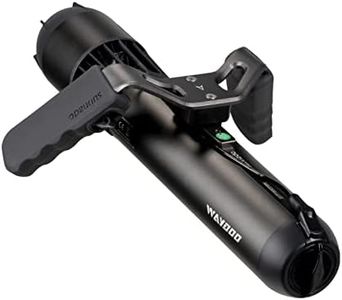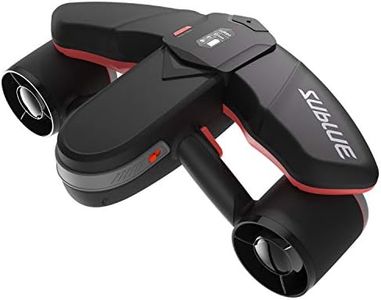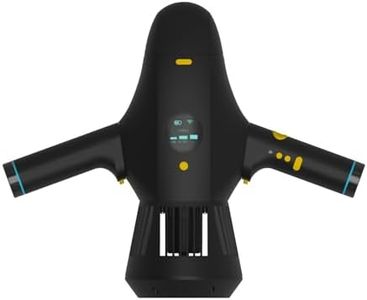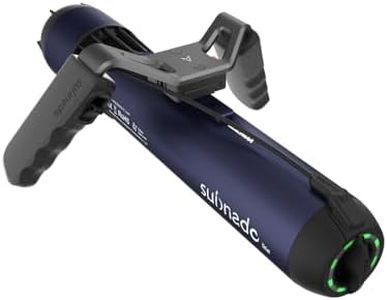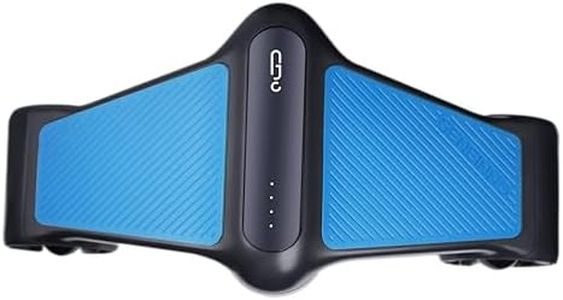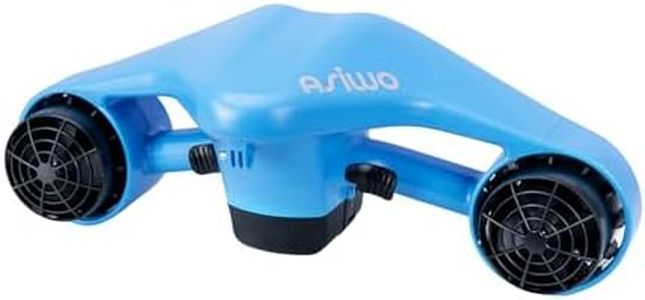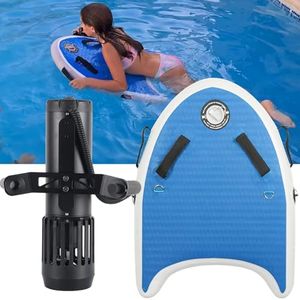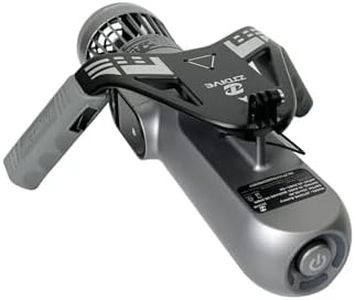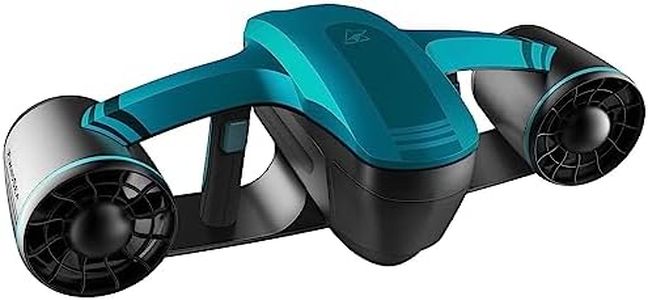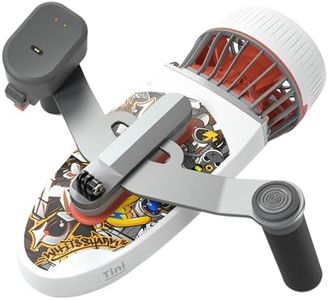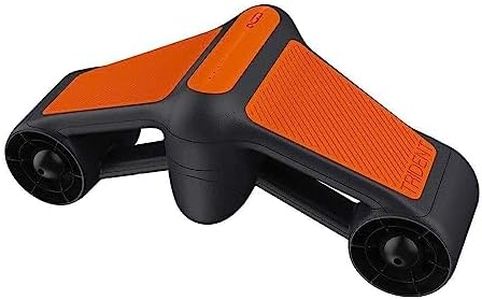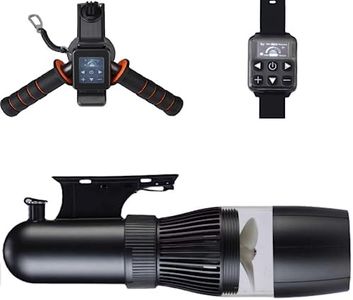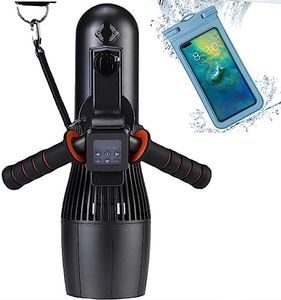We Use CookiesWe use cookies to enhance the security, performance,
functionality and for analytical and promotional activities. By continuing to browse this site you
are agreeing to our privacy policy
10 Best Sea Scooters
From leading brands and best sellers available on the web.Buying Guide for the Best Sea Scooters
Sea-scooters, also known as underwater scooters or diver propulsion vehicles (DPVs), are fantastic devices for enhancing your swimming, snorkeling, or diving adventures by propelling you through the water with minimal effort. Choosing the best sea-scooter depends on understanding your intended use—whether it's for occasional pool fun, snorkeling, or more advanced diving—and matching the device’s features to your needs. To make an informed choice, focus on the key specifications that determine a scooter's performance, suitability, and safety.Maximum SpeedMaximum speed tells you how fast the sea-scooter can propel you through the water. This is important because higher speeds are useful for covering greater distances quickly or fighting strong currents, while lower speeds are usually enough for leisurely pool use or light snorkeling. Typically, speeds can range from about 2 to 5 miles per hour. For relaxed snorkeling and safe use by children or beginners, lower speeds are preferable. More adventurous users or divers who want to cover larger areas might appreciate higher speeds.
Depth RatingDepth rating shows how deep underwater the scooter can safely be used without risking water damage or malfunction. Shallow ratings (up to 15 feet) are perfect for pools and surface snorkeling, while mid-range ratings (up to 100 feet) fit most recreational diving activities. Higher ratings (100 feet and beyond) are intended for advanced divers planning deeper excursions. Choose a depth rating that matches the environments in which you'll regularly use the scooter; select a safer, shallower model for beginners or pool users, or a more robust, deep-rated scooter for certified divers.
Battery Life / Run TimeBattery life or run time refers to how long the scooter can operate before needing a recharge. Longer run time is important if you plan extended outings, while shorter run time might be fine for quick fun sessions in the pool. Generally, run times vary from about 30 minutes to over 90 minutes depending on the model and usage speed. Think about how long your typical adventures last and consider a longer run time if you don’t want to worry about the battery dying mid-use.
WeightWeight affects how easy the sea-scooter is to carry, transport, and maneuver both in and out of water. Lighter scooters (under 10 pounds) are great for kids or anyone who will do a lot of carrying, especially to and from the beach or pool. Heavier models often have more power or features but can be cumbersome. If portability matters to you, or for younger users, opt for lighter models. Heavier scooters might be preferable if you need more power and aren't concerned about carrying weight.
BuoyancyBuoyancy describes whether the scooter floats, sinks, or is neutrally buoyant in the water. Positively buoyant scooters will float to the surface if they are let go, making them safer for shallow use and easier to recover—ideal for kids and beginners. Neutrally buoyant scooters neither sink nor float, making them better for diving, as they stay at your depth without effort. Negatively buoyant scooters tend to sink, which can be useful for advanced divers but riskier for surface play. Match buoyancy to your main activity and skill level.
Safety FeaturesSafety features include things like auto shut-off, protective grills, speed controls, and low battery alarms. These features ensure safe operation, especially for younger or inexperienced users. Auto shut-off stops the propeller when you let go, protective grills prevent injuries, and alarms alert you to low battery before you're stranded. Always check for essential safety features, particularly if kids or beginners will be using the device.
